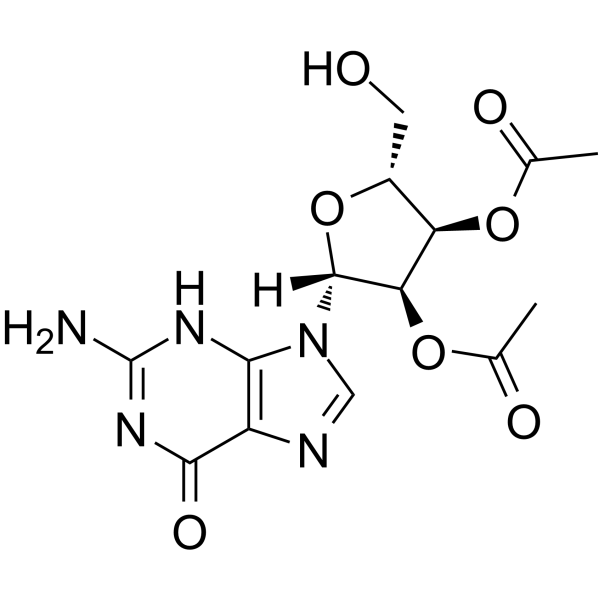Signaling Pathways
The antibody-drug conjugate (ADC), a humanized or human monoclonal antibody conjugated with highly cytotoxic small molecules (payloads) through chemical linkers, is a novel therapeutic format and has great potential to make a paradigm shift in cancer chemotherapy. The three components of the ADC together give rise to a powerful oncolytic agent capable of delivering normally intolerable cytotoxins directly to cancer cells, which then internalize and release the cell-destroying drugs. At present, two ADCs, Adcetris and Kadcyla, have received regulatory approval with >40 others in clinical development.
ADCs are administered intravenously in order to prevent the mAb from being destroyed by gastric acids and proteolytic enzymes. The mAb component of the ADC enables it to circulate in the bloodstream until it finds and binds to tumor-specific cell surface antigens present on target cancer cells. Linker chemistry is an important determinant of the safety, specificity, potency and activity of ADCs. Linkers are designed to be stable in the blood stream (to conform to the increased circulation time of mAbs) and labile at the cancer site to allow rapid release of the cytotoxic drug. First generation ADCs made use of early cytotoxins such as the anthracycline, doxorubicin or the anti-metabolite/antifolate agent, methotrexate. Current cytotoxins have far greater potency and can be divided into three main groups: auristatins, maytansines and calicheamicins.
The development of site-specific conjugation methodologies for constructing homogeneous ADCs is an especially promising path to improving ADC design, which will open the way for novel cancer therapeutics.
References:
[1] Tsuchikama K, et al. Protein Cell. 2016 Oct 14. DOI:10.1007/s13238-016-0323-0.
[2] Peters C, et al. Biosci Rep. 2015 Jun 12;35(4). pii: e00225. doi: 10.1042/BSR20150089.
Ziele für Signaling Pathways
- Proteases(29)
- Apoptosis(824)
- Chromatin/Epigenetics(15)
- Metabolism(336)
- MAPK Signaling(26)
- Tyrosine Kinase(73)
- DNA Damage/DNA Repair(49)
- PI3K/Akt/mTOR Signaling(38)
- Microbiology & Virology(42)
- Cell Cycle/Checkpoint(168)
- Ubiquitination/ Proteasome(24)
- JAK/STAT Signaling(10)
- TGF-β / Smad Signaling(21)
- Angiogenesis(59)
- GPCR/G protein(3)
- Stem Cell(19)
- Membrane Transporter/Ion Channel(161)
- Cancer Biology(366)
- Endocrinology and Hormones(152)
- Neuroscience(367)
- Obesity, Appetite Control & Diabetes(17)
- Peptide Inhibitors and Substrate(2)
- Other Signal Transduction(156)
- Immunology/Inflammation(934)
- Cardiovascular(98)
- Vitamin D Related(0)
- Antibody-drug Conjugate/ADC Related(0)
- PROTAC(212)
- Ox Stress Reagents(24)
- Others(4010)
- Antiparasitics(6)
- Toxins(62)
Produkte für Signaling Pathways
- Bestell-Nr. Artikelname Informationen
-
GC61643
1-Hydroxy-2-butanone
1-Hydroxy-2-butanon ist eine aus Bomboo Juice isolierte natÜrliche Verbindung mit antituberkulÖser AktivitÄt.
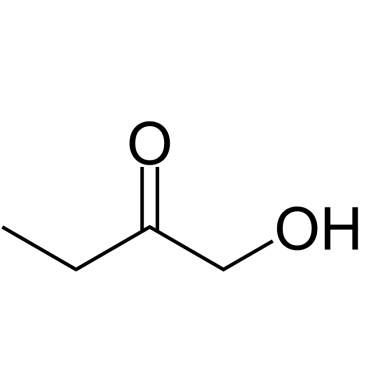
-
GC48909
1-Hydroxyanthraquinone
1-Hydroxyanthrachinon, eine natÜrlich vorkommende Verbindung mit oraler Wirkung aus einigen Pflanzen wie Tabebuia avellanedae, weist eine krebserzeugende Wirkung auf.

-
GC25004
1-Iodoadamantane
1-Iodoadamantane (Adamantyl iodide) is a chemical.
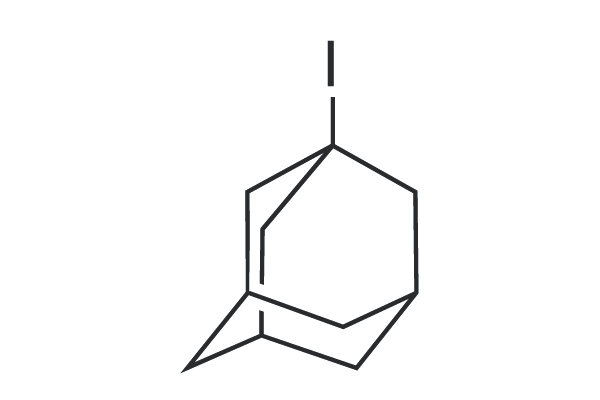
-
GC49495
1-Isothiocyanato-6-(methylsulfenyl)-hexane
An isothiocyanate with diverse biological activities

-
GC66557
1-Isothiocyanato-PEG3-azide
1-Isothiocyanato-PEG3-Azid ist ein PEG-basierter PROTAC-Linker, der bei der Synthese von PROTACs verwendet werden kann.
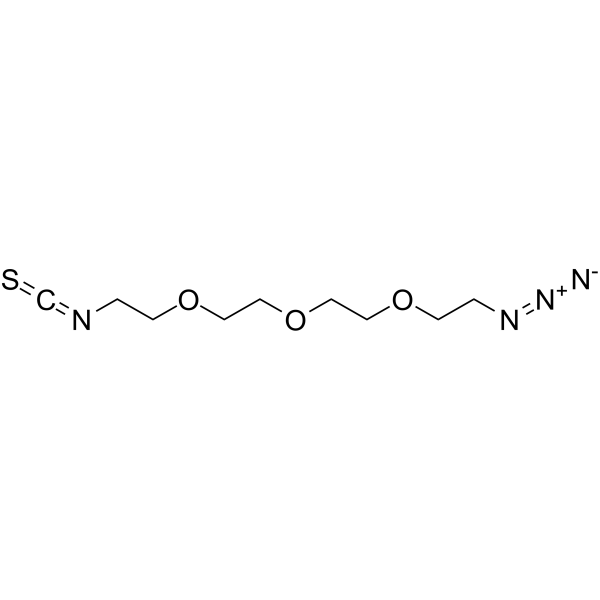
-
GC65697
1-Isothiocyanato-PEG4-alcohol
1-Isothiocyanato-PEG4-Alkohol ist ein PEG-basierter PROTAC-Linker, der bei der Synthese von PROTACs verwendet werden kann.
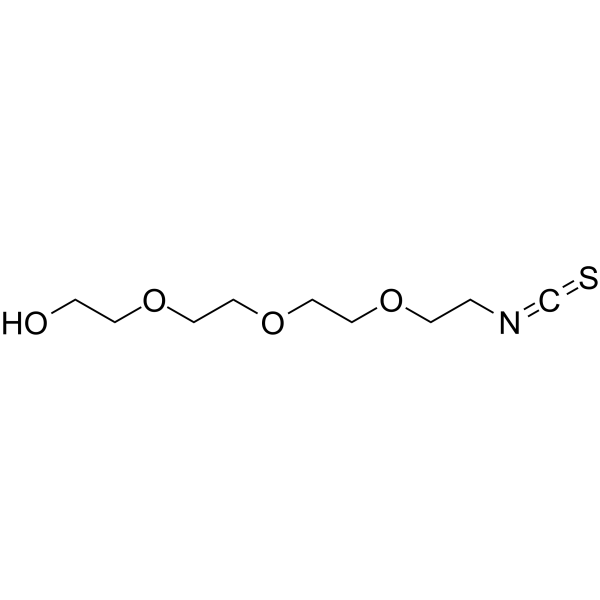
-
GC61715
1-Methoxynaphthalene
1-Methoxynaphthalin wird als Substrat verwendet, um die AktivitÄt der Cytochrom-c-Peroxidase (CcP) zu untersuchen.
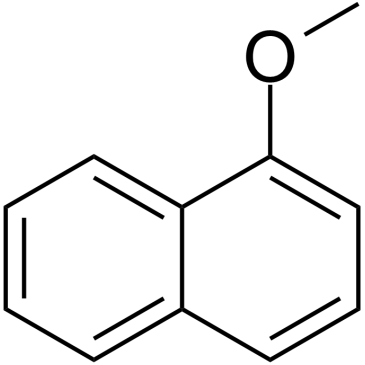
-
GC64598
1-Methyl-L-histidine-d3
1-Methyl-L-Histidin-d3 ist das mit Deuterium markierte 1-Methyl-L-Histidin.

-
GC61442
1-Methylguanidine hydrochloride
1-Methylguanidinhydrochlorid ist ein kÖrpereigener Metabolit.
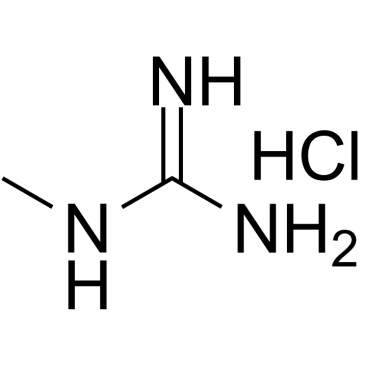
-
GC65038
1-Methylinosine
1-Methylinosin ist ein modifiziertes Nukleotid, das an Position 37 in tRNA 3' zum Anticodon von eukaryotischer tRNA gefunden wird.

-
GC64156
1-N-Boc-3-hydroxyazetidine
1-N-Boc-3-hydroxyazetidin ist ein nicht spaltbarer ADC-Linker, der bei der Synthese von AntikÖrper-Wirkstoff-Konjugaten (ADCs) verwendet wird. 1-N-Boc-3-hydroxyazetidin ist auch ein PROTAC-Linker auf Alkylkettenbasis, der bei der Synthese von PROTACs verwendet werden kann
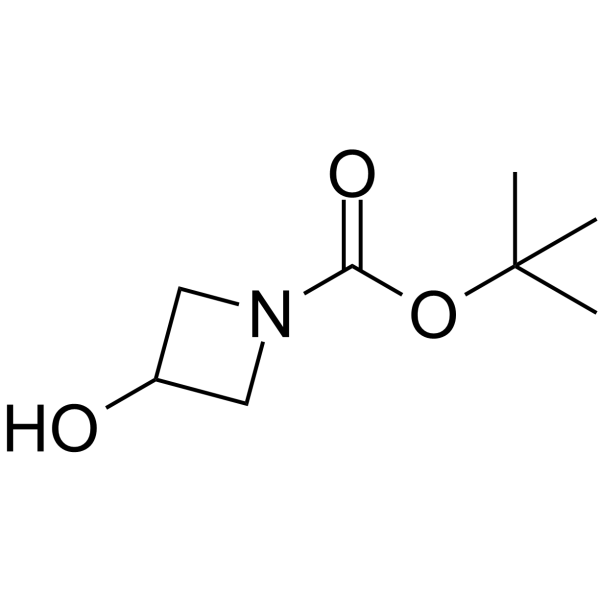
-
GC61687
1-Naphthalenemethanol
1-Naphthalinmethanol ist eine natÜrliche Verbindung der Wurzelrindenextrakte von Annona senegalensis mit antibakterieller Wirkung.
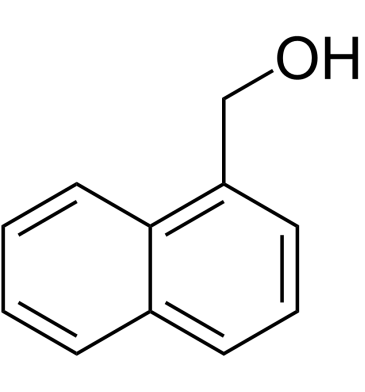
-
GC61652
1-Nonadecanol
1-Nonadecanol ist eine der Zusammensetzungen des Ätherischen Öls von Überkritischem Kohlendioxid (SC-CO2) von Heracleum thomsonii.
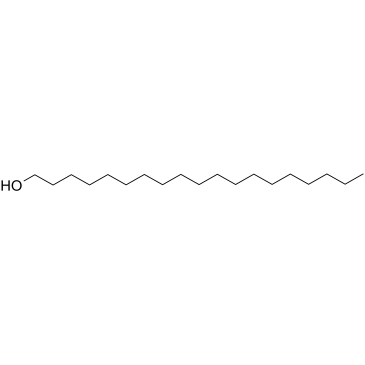
-
GC49818
1-Octen-3-ol
1-Octen-3-ol, eine duftende FettsÄure, ist ein selbststimulierender Oxylipin-Botenstoff.

-
GC68501
1-Palmitoyl-2-oleoyl-sn-glycerol
1-Palmitoyl-2-oleoyl-sn-glycerol ist eine endogene Metabolit und auch der Hauptdiacylglycerin in Hypoxie-induzierbaren Faktor (HIF)-1 bei Algen.
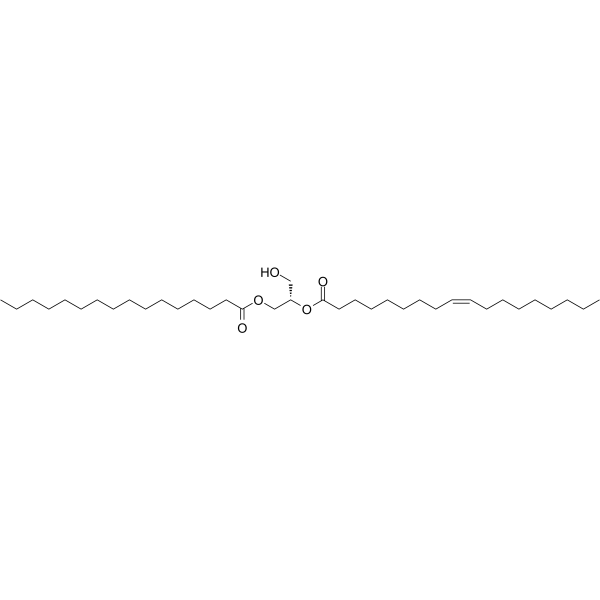
-
GC49071
1-Palmitoyl-d9 Lysophosphatidic Acid
An internal standard for the quantification of 1-palmitoyl lysophosphatidic acid

-
GC61645
1-Pentadecanol
1-Pentadecanol ist ein natÜrlich vorkommendes Mittel gegen Akne.
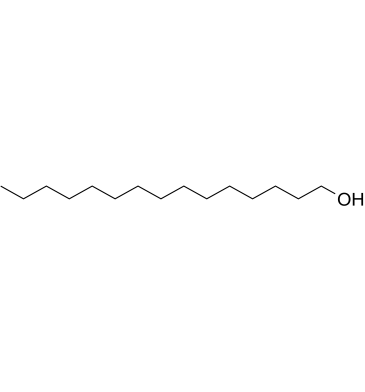
-
GC49366
1-Salicylate Glucuronide
A metabolite of salicylic acid and aspirin

-
GC49730
1-Stearoyl-2-15(S)-HETE-sn-glycero-3-PE-d11
An internal standard for the quantification of 1-stearoyl-2-15(S)-HETE-sn-glycero-3-PE

-
GC49088
1-Stearoyl-2-Adrenoyl-sn-glycero-3-PE
A phospholipid

-
GC49733
1-Stearoyl-2-eicosapentaenoyl-sn-glycero-3-PC
A phospholipid

-
GC68502
1-Stearoyl-2-linoleoyl-sn-glycero-3-phosphocholine
1-Stearoyl-2-linoleoyl-sn-glycero-3-phosphocholin kann als Modell für flüchtige Verbindungen verwendet werden, die zur Untersuchung von Phosphatidylcholin-Molekülarten eingesetzt werden. Diese Methode wurde auf tatsächliche Lebensmittelproben angewendet, nämlich Sojalecithin.
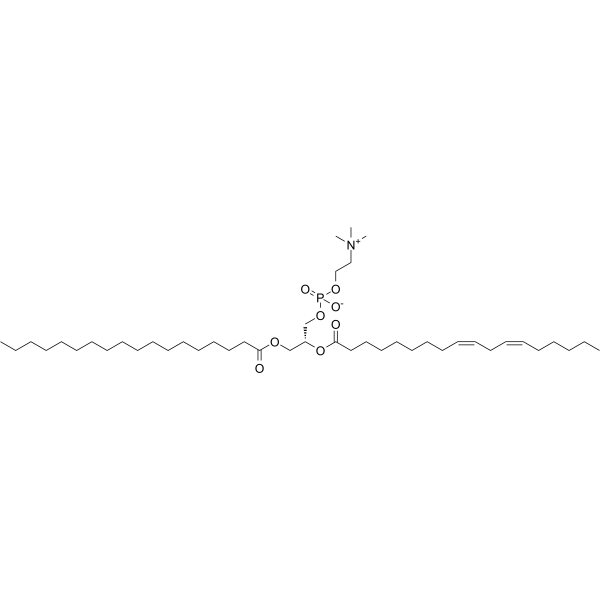
-
GC61641
1-Tetradecanol
1-Tetradecanol, isoliert aus Myristica fragrans, ist ein geradkettiger gesÄttigter Fettalkohol.
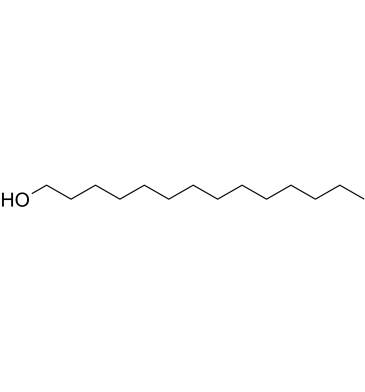
-
GC25003
1-[(4R,5R)-4,5-Dihydroxy-L-ornithine]echinocandin B hydrochloride (1:1)
1-[(4R,5R)-4,5-Dihydroxy-L-ornithine]-Echinocandin B Hydrochloride (Anidulafungin Nucleus) is used in the commercialization and late-stage development of a semisynthetic antifungal anidulafungin/D-fructose.
![1-[(4R,5R)-4,5-Dihydroxy-L-ornithine]echinocandin B hydrochloride (1:1) Chemical Structure 1-[(4R,5R)-4,5-Dihydroxy-L-ornithine]echinocandin B hydrochloride (1:1) Chemical Structure](/media/struct/default.png)
-
GC49820
10,11-dihydro-10,11-dihydroxy Carbamazepine
A metabolite of carbamazepine and oxcarbazepine

-
GC66057
10,11-Dihydrocarbamazepine
10,11-Dihydrocarbamazepin ist der aktive Metabolit von Oxcarbazepin. 10,11-Dihydrocarbamazepin ist ebenfalls ein Zwischenprodukt. Oxcarbazepin wird schnell und fast vollstÄndig in 10,11-Dihydrocarbazepin mit wahrscheinlicher antikonvulsiver Wirksamkeit umgewandelt.

-
GC48782
10,13-epoxy-11-methyl-Octadecadienoic Acid
A furan fatty acid

-
GC49736
10-acetyl Docetaxel
10-Acetyl-Docetaxel (10-Acetyl-Docetaxel) ist ein Analogon von Docetaxel mit AntikrebsaktivitÄt. Docetaxel ist ein Inhibitor der Mikrotubuli-Zerlegung mit antimitotischer AktivitÄt.

-
GC12954
10-DAB (10-Deacetylbaccatin)
An inhibitor of microtubule assembly
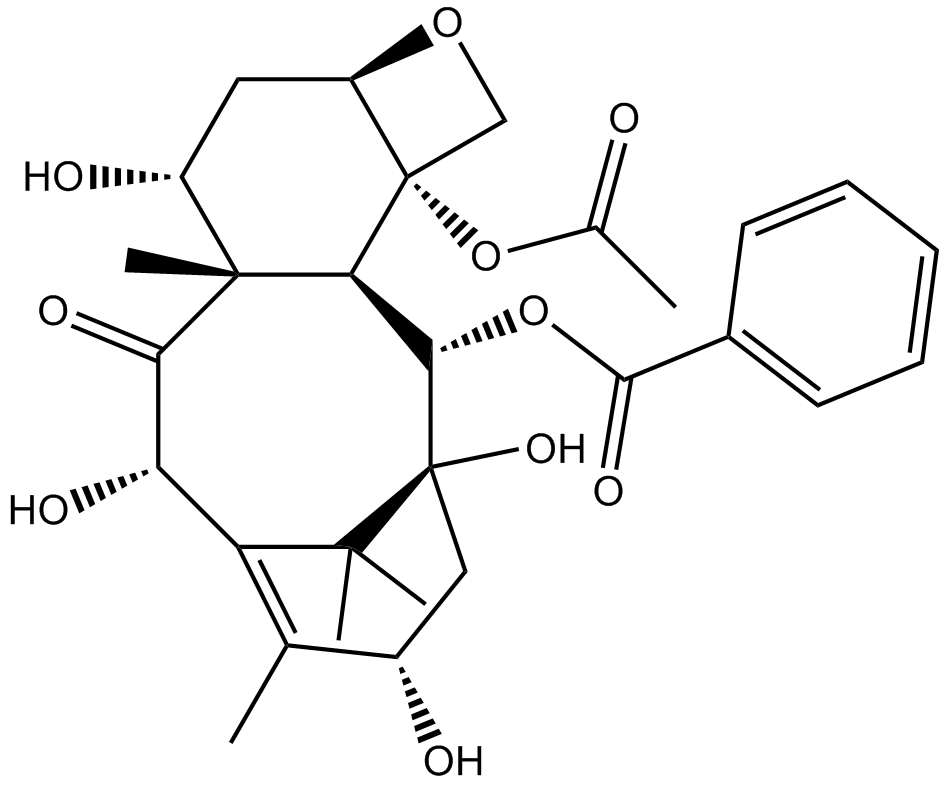
-
GC64726
10-Formyl-5,8-dideazafolic acid
10-Formyl-5,8-dideazafolsÄure ist ein Thymidylat-Synthase-Hemmer.

-
GC49872
10-Formyltetrahydrofolate (sodium salt) (technical grade)
10-Formyltetrahydrofolat (Natriumsalz) (technische QualitÄt) ist eine Form von TetrahydrofolsÄure, die als Spender von Formylgruppen im Anabolismus wirkt.

-
GC49118
10-hydroxy Warfarin
A metabolite of (R)-warfarin

-
GC52026
10-oxo-12(Z),15(Z)-Octadecadienoic Acid
An oxylipin gut microbiota metabolite

-
GC52071
10-oxo-12(Z)-Octadecenoic Acid
A metabolite of linoleic acid and an activator of TRPV1

-
GC52398
10-oxo-12(Z)-Octadecenoic Acid ethyl ester
An ester form of 10-oxo-12(Z)-octadecenoic acid

-
GC52428
10-oxo-12(Z)-Octadecenoic Acid-d5
An internal standard for the quantification of 10-oxo-12(Z)-octadecenoic acid

-
GC63576
10074-A4
10074-A4 ist ein c-Myc-Inhibitor. 10074-A4 kÖnnte an verschiedenen Stellen entlang der Peptidkette an c-Myc370-409 binden. 10074-A4 hat Antikrebswirkungen.
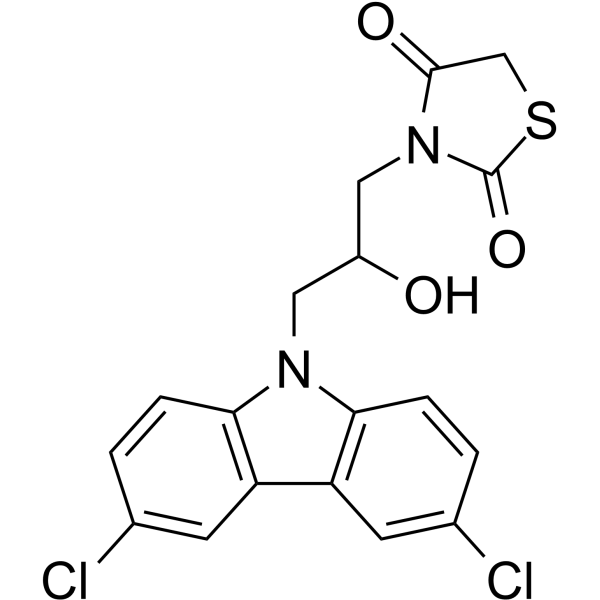
-
GC13863
10Panx
A peptide inhibitor of PANX1
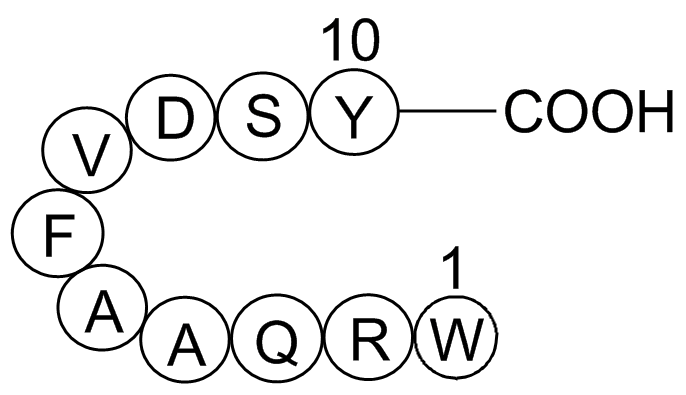
-
GC52423
10Panx (trifluoroacetate salt)
A peptide inhibitor of PANX1

-
GC48787
11β-Hydroxyetiocholanolone
A metabolite of hydrocortisone

-
GC68204
11-Azidoundecanoic acid
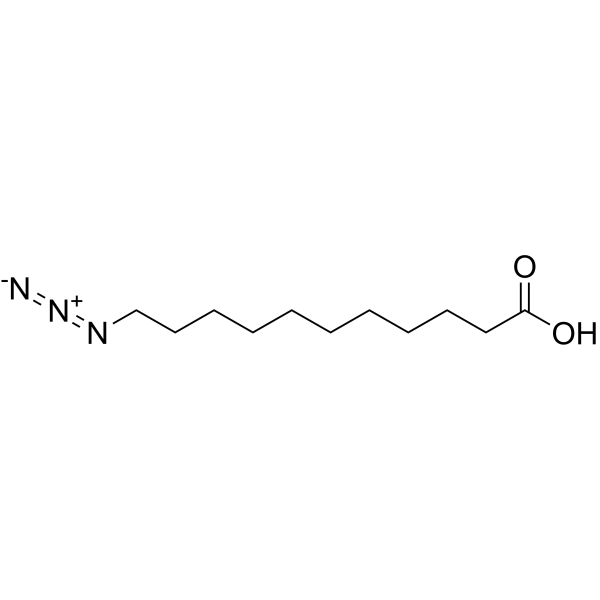
-
GC48821
11-cis Retinol
An isomer of vitamin A

-
GC48710
11-Dehydrocorticosterone
11-Dehydrocorticosteron ist ein kÖrpereigenes Corticosteroid.

-
GC66224
11-Maleimidoundecanoic acid
11-MaleimidundecansÄure ist ein Alkylketten-basierter PROTAC-Linker, der bei der Synthese von PROTACs verwendet werden kann.
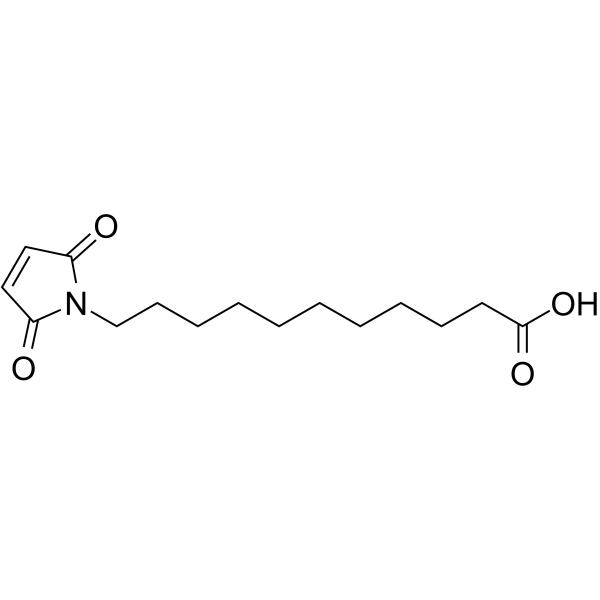
-
GC61538
11-Oxo etiocholanolone
11-Oxo-Etiocholanolon (11-Ketoetiocholanolon) ist ein Metabolit von Etiocholanolon.
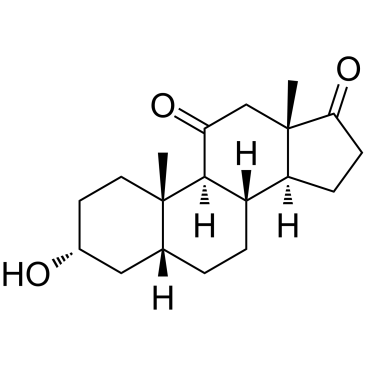
-
GC52343
113-O12B
An ionizable cationic lipidoid

-
GC63796
116-9e
116-9e (MAL2-11B) ist ein Hsp70-Co-Chaperon-DNAJA1-Inhibitor.
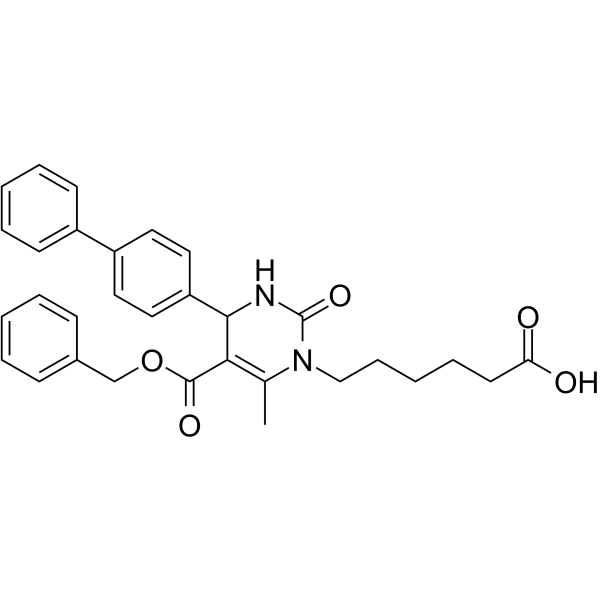
-
GC49310
12-hydroxy Stearic Acid
12-Hydroxystearinsäure ist ein strukturell einfacher und kostengünstiger Organogelierer mit niedrigem Molekulargewicht, und seine Metallsalze und Derivate finden in vielen wichtigen Anwendungen eine Rolle.

-
GC49808
12-methyl Tridecanoic Acid
A methylated fatty acid

-
GC64008
12-O-Methylcarnosic acid
12-O-MethylcarnosinsÄure (12-MethoxycarnosinsÄure), eine aus dem Acetonextrakt von Salvia microphylla isolierte DiterpencarnosinsÄure, ist ein aktiver Bestandteil der 5α-Reduktase-Hemmung mit einem IC50-Wert von 61,7 μM.
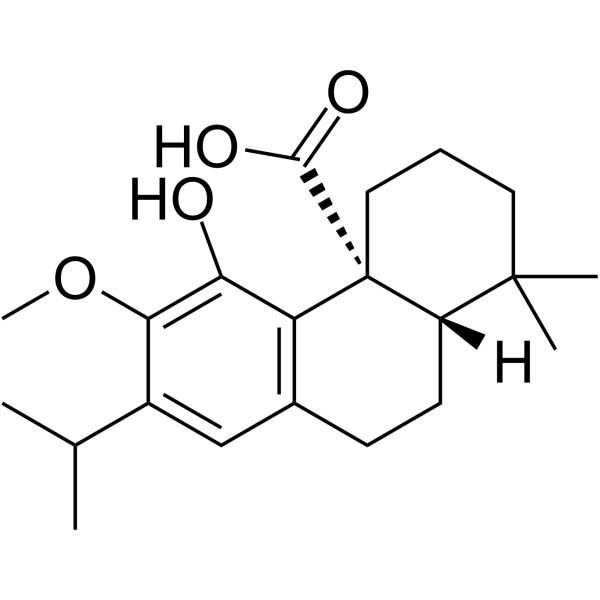
-
GN10444
12-O-tetradecanoyl phorbol-13-acetate
Ein PKC-Aktivator
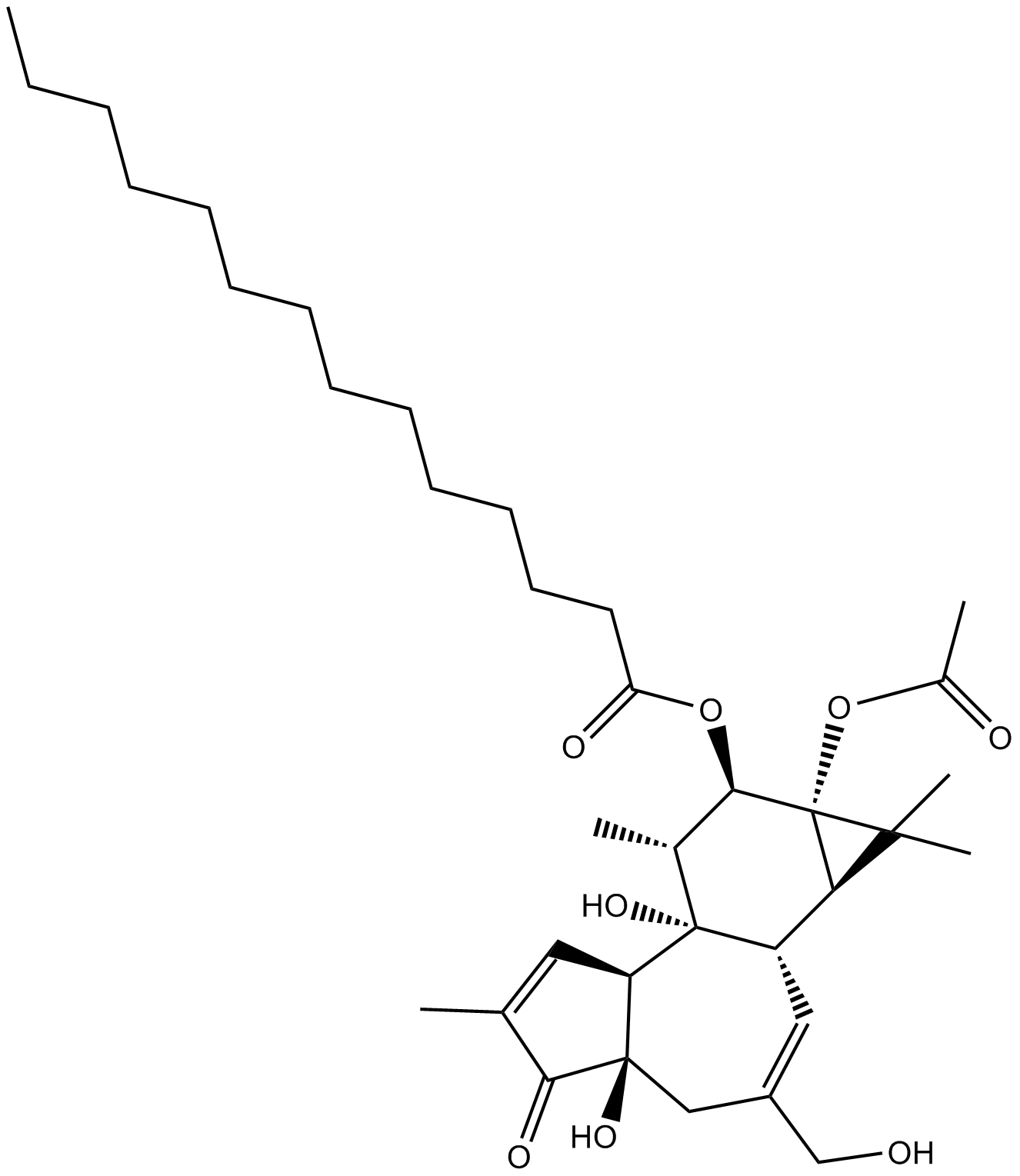
-
GC52133
12-Tridecenoic Acid

-
GC62725
13,21-Dihydroeurycomanone
13,21-Dihydroeurycomanon, eine natÜrliche Verbindung, die aus der Wurzel von Eurycoma longifolia isoliert wurde, besitzt eine AntiparasitenaktivitÄt fÜr Plasmodium falciparum und Toxoplasma gondii.
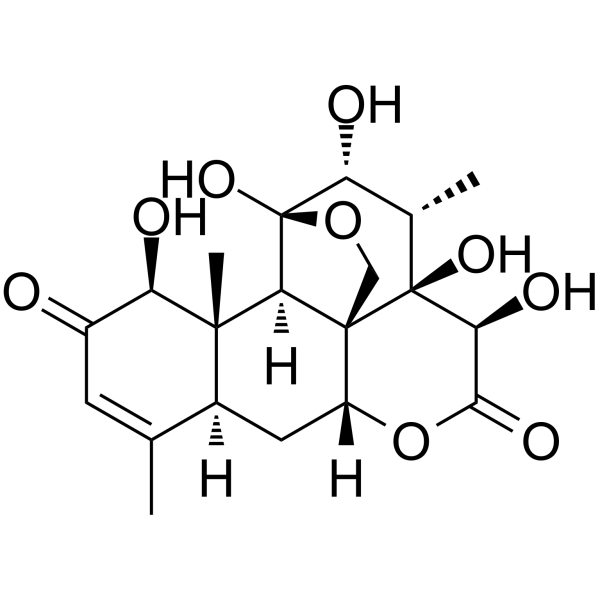
-
GC62758
13-cis-Vitamin A palmitate
13-cis-Vitamin-A-Palmitat (13-cis-Retinylpalmitat) ist ein 13-cis-Isomer, das aus Vitamin-A-Palmitat in Cornflakes gebildet wird.
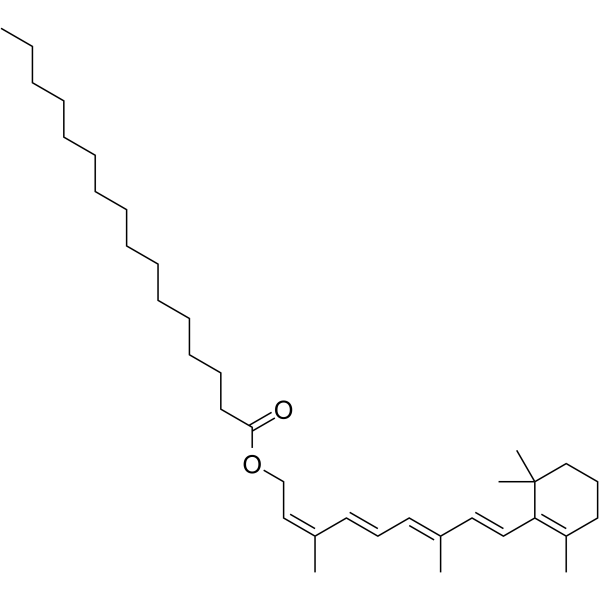
-
GC49759
13C17-Mycophenolic Acid
An internal standard for the quantification of mycophenolic acid

-
GC49912
13C20,15N10-Cyclic di-GMP (sodium salt)
An internal standard for the quantification of cyclic di-GMP

-
GC49390
13C6-4-Nitroaniline
An internal standard for the quantification of 4-nitroaniline

-
GC49894
15(S)-HETE-d8 ethyl ester
An internal standard for the quantification of 15(S)-HETE ethyl ester

-
GC49036
15-(6-nitroxyhexanoyl)-17-phenyl trinor Prostaglandin F2α
A nitric oxide-donating derivative of 17-phenyl trinor prostaglandin F2α

-
GC68488
15-Azido-pentadecanoic acid
15-Azido-Pentadecansäure ist eine chemische Reagenz, die Azidogruppen enthält. Azido-Palmitinsäure kann verwendet werden, um posttranslationell palmitoylierte Proteine zu identifizieren und zu charakterisieren, indem eine einfache und robuste Zweischritt-Markierungs- und Nachweistechnik angewendet wird.
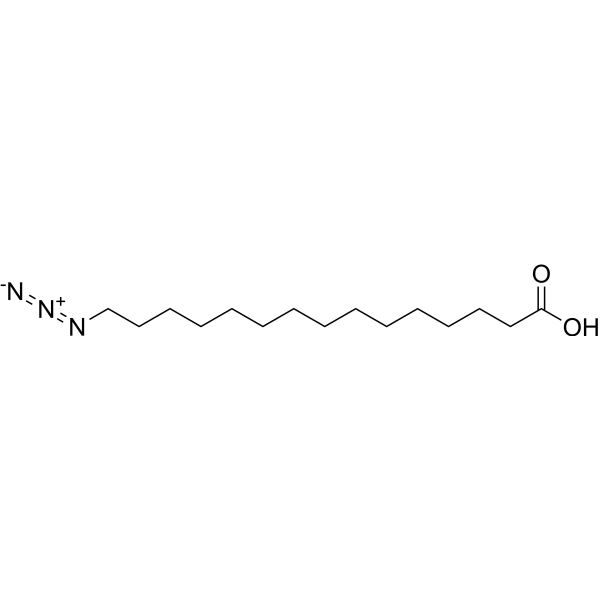
-
GC49161
16α-hydroxy Dehydroepiandrosterone
A metabolite of dehydroepiandrosterone

-
GC65988
16-Azidohexadecanoic acid
16-AzidohexadecansÄure, eine synthetische FettsÄure, kann als Modifikationsmarker fÜr Nukleotide und als molekulare Sonde fÜr den FettsÄurestoffwechsel verwendet werden.
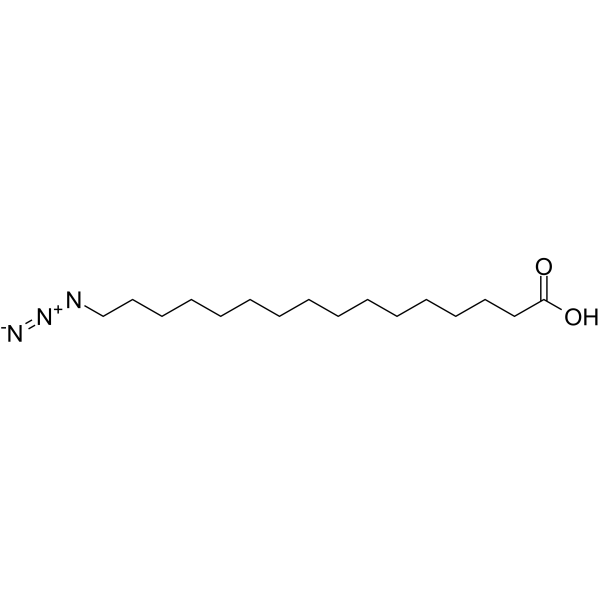
-
GC49068
16-Epiestriol
16-Epiestriol ist ein Metabolit des endogenen Östrogens Östron mit antibakterieller und entzÜndungshemmender Wirkung.

-
GC61740
16-Keto Aspergillimide
16-Keto-Aspergilimid (SB202327) ist ein Anthelminthikum, das aus dem Aspergillus-Stamm IMI 337664 isoliert wurde.
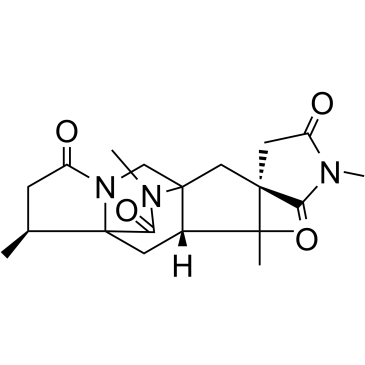
-
GC49848
16-Ketoestradiol
An active metabolite of estrone

-
GC17557
17 alpha-propionate
A peripherally selective androgen receptor antagonist
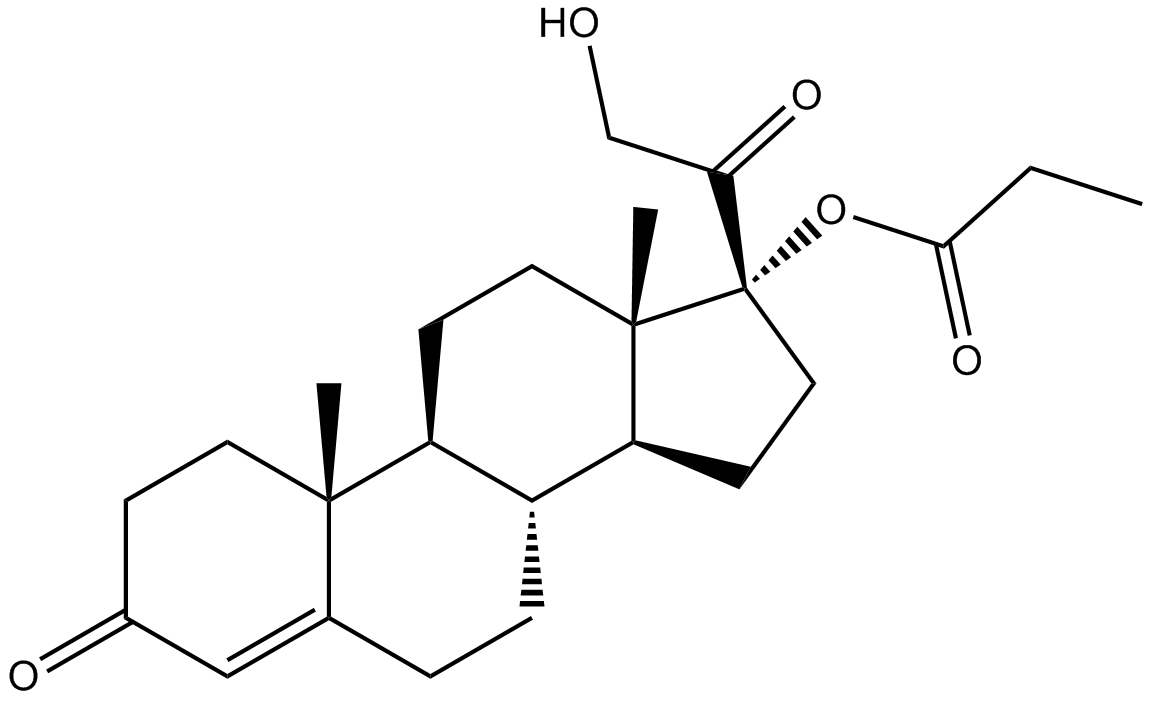
-
GC68493
17α-Hydroxyprogesterone-d8
17α-Hydroxyprogesterone-d8 ist das Deuterium-Isotop von 17α-Hydroxyprogesteron. 17α-Hydroxyprogesteron (auch bekannt als 17-Hydroxyprogesteron) ist ein endogenes Progesteron und dient als chemisches Zwischenprodukt bei der Biosynthese anderer Steroidhormone wie Glukokortikoiden, Androgenen und Östrogenen.
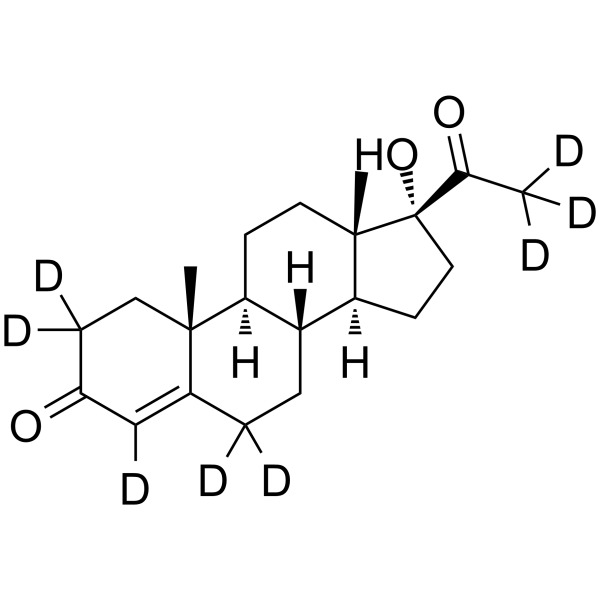
-
GC65870
17β-Estradiol-3-β-D-glucuronide-d3 sodium
1&7#946;-Estradiol-3-β-D-Glucuronid-d3-Natrium ist das mit Deuterium markierte 1&7#946;-Estradiol-3-β-D-Glucuronid.
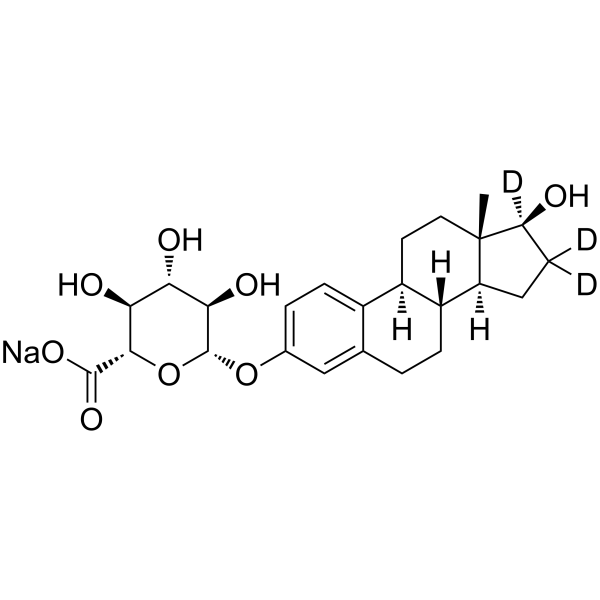
-
GC68494
17β-HSD1-IN-1
17β-HSD1-IN-1 (Verbindung 1) ist ein hochselektiver Inhibitor von 17β-HSD1, der die IC50-Werte von 5,6 und 3155 nM für die Hemmung von 17β-HSD1 und 17β-HSD2 aufweist. Es kann für die Erforschung von nicht-kleinzelligem Lungenkrebs (NSCLC) verwendet werden.
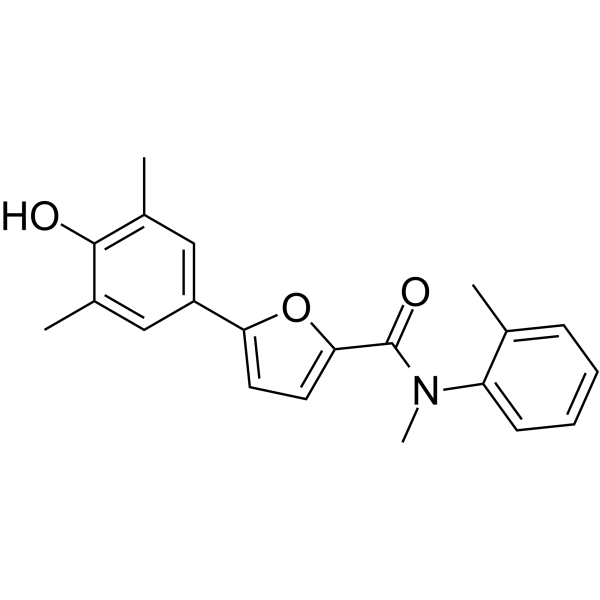
-
GC49178
17(R)-Protectin D1
An aspirin-triggered epimer of protectin D1

-
GC49356
17(S)-HDoTE
A metabolite of adrenic acid

-
GC61823
17,17-(Ethylenedioxy)androst-4-en-3-one
17,17-(Ethylendioxy)androst-4-en-3-on (4-Androsten-3,17-dion-17-cyclisches Ethylenketal) ist ein wirksamer Inhaltsstoff in Kosmetika, der verwendet werden kann fÜr Akne und FÖrderung der Haarwachstumsforschung.
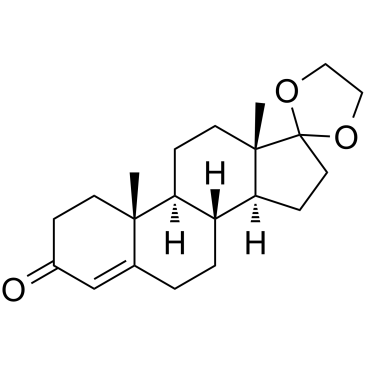
-
GC11720
17-AAG (KOS953)
An inhibitor of Hsp90
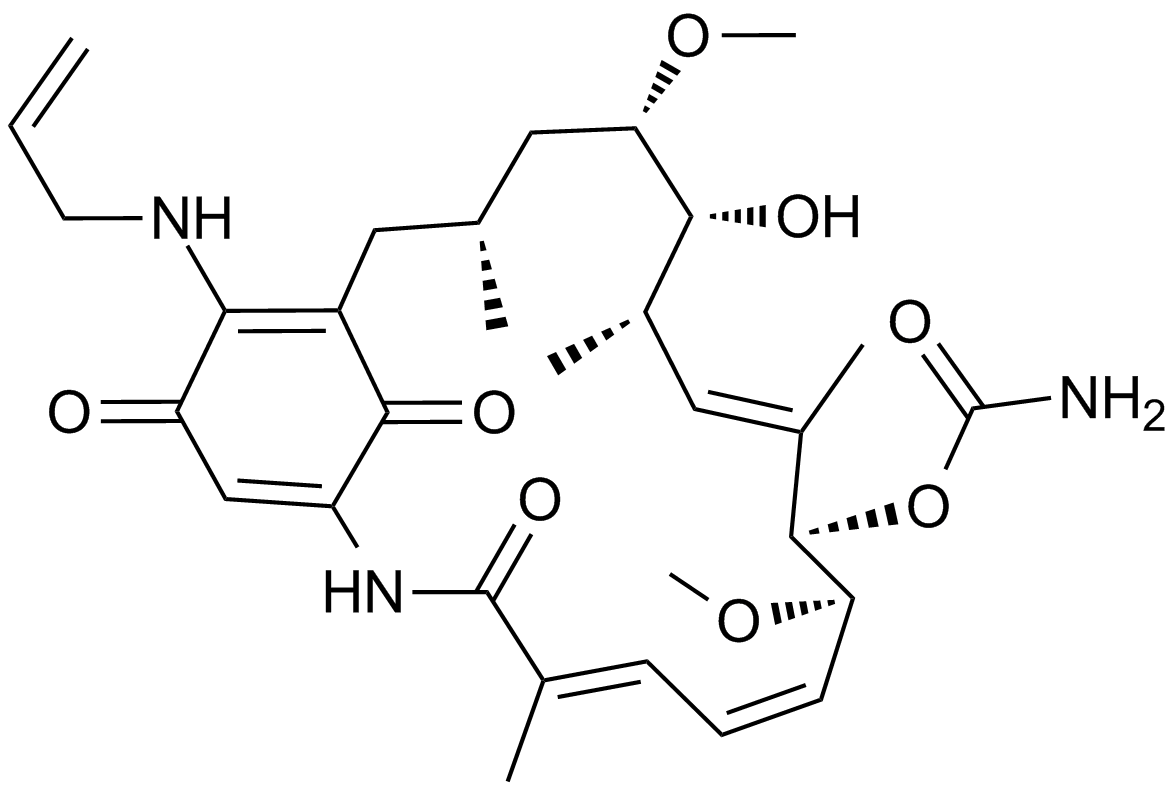
-
GC17210
17-AAG Hydrochloride
Hsp90 inhibitor,geldanamycin analogue
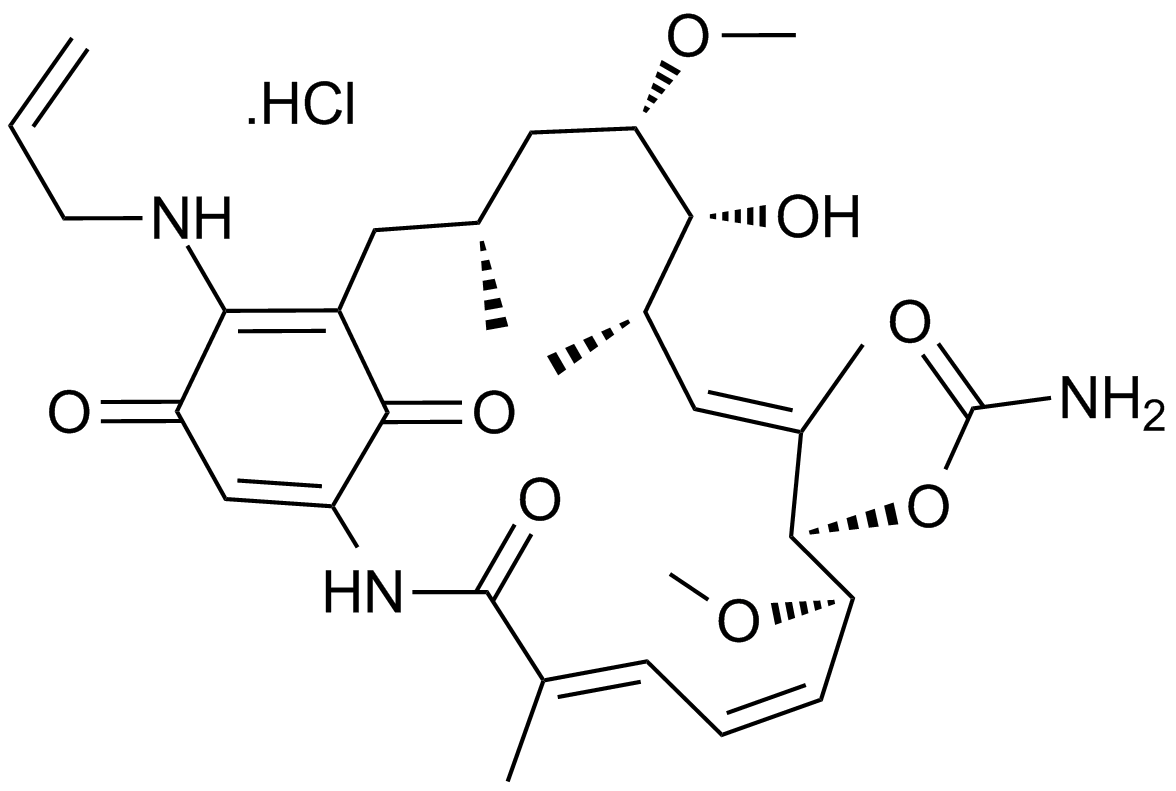
-
GC48819
17-Epiestriol
A metabolite of estrone

-
GC68426
17a-Hydroxypregnenolone-d3
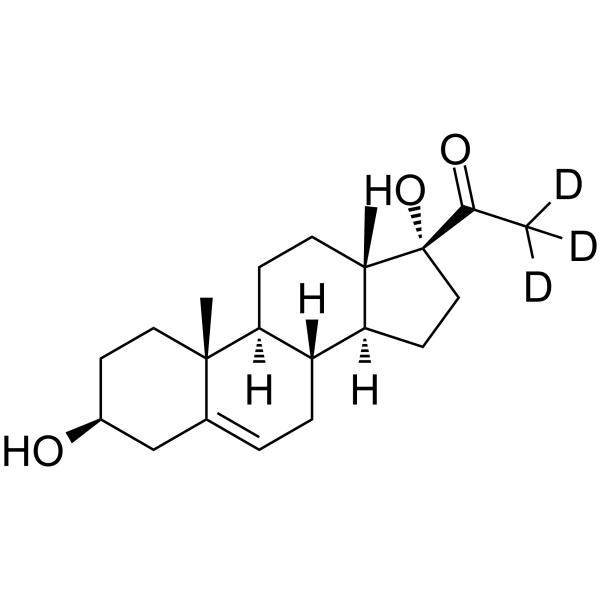
-
GC62759
18-Oxocortisol
18-Oxocortisol ist ein Derivat von Cortisol, das von der Aldosteronsynthase (CYP11B2) produziert wird.
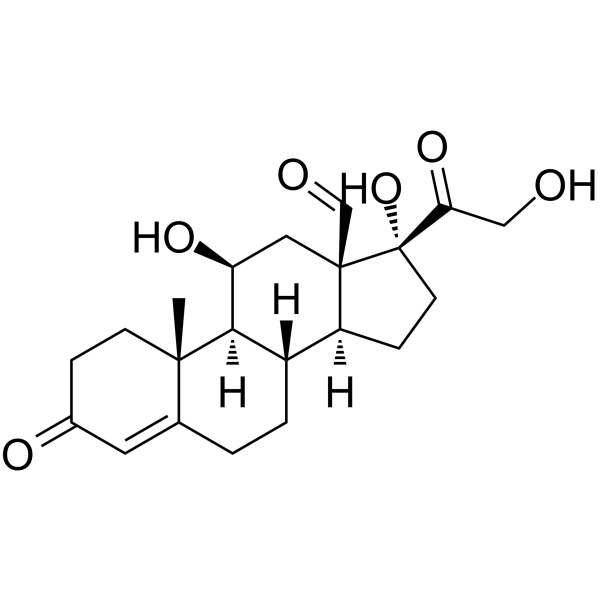
-
GC49651
19-alkyne Cholesterol
Ein Alkin-Derivat von Cholesterin für die Click-Chemie.

-
GC63603
19-Hydroxyandrost-4-ene-3,17-dione
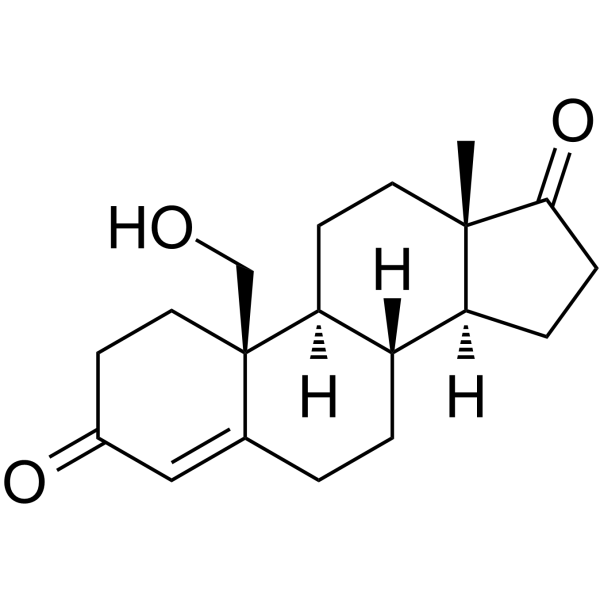
-
GC15623
1alpha, 25-Dihydroxy VD2-D6
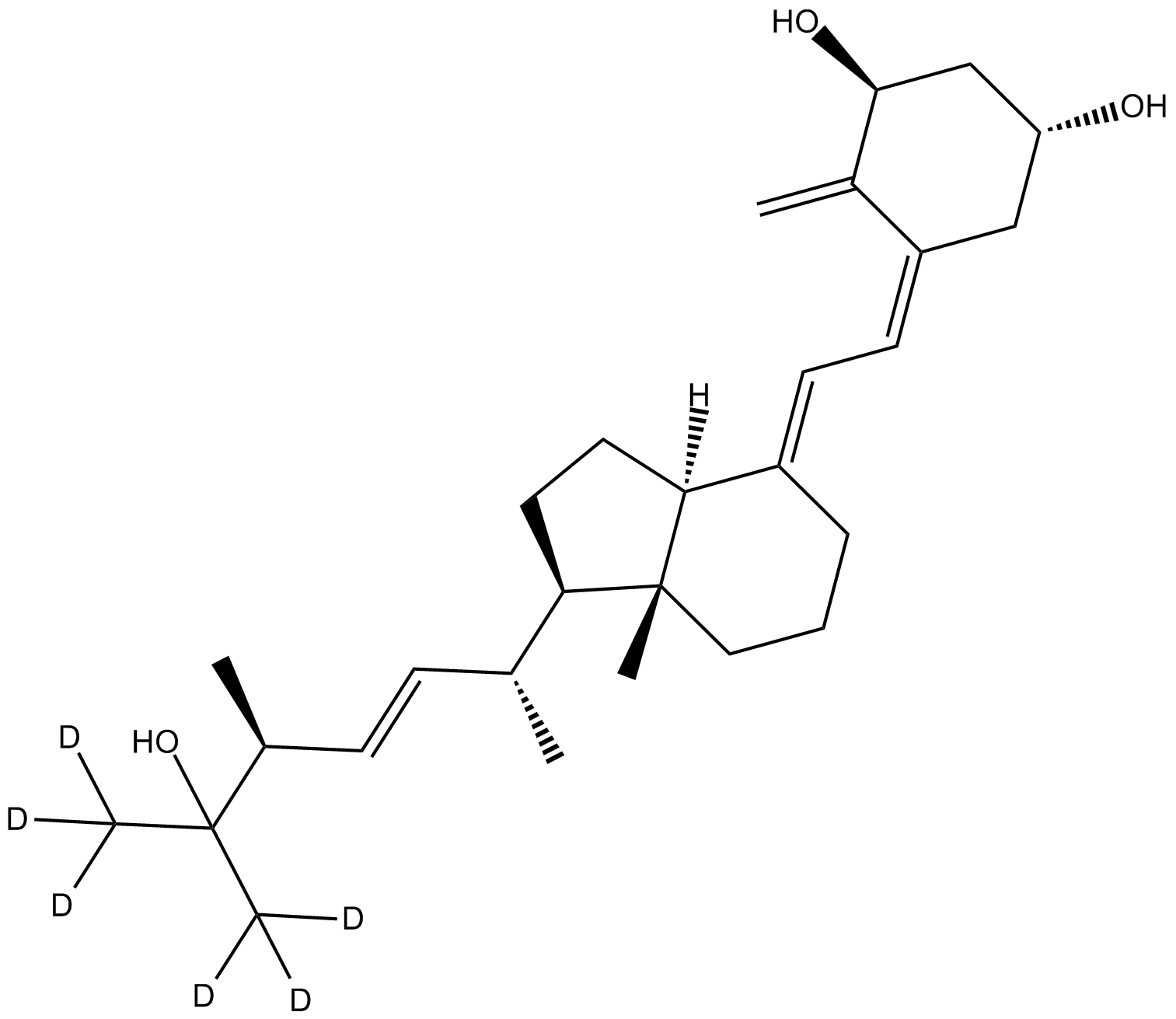
-
GC52216
1H,1H,2H,2H-Perfluorooctanesulfonic Acid
A polyfluoroalkyl substance

-
GA11081
2 CTC
2 CTC
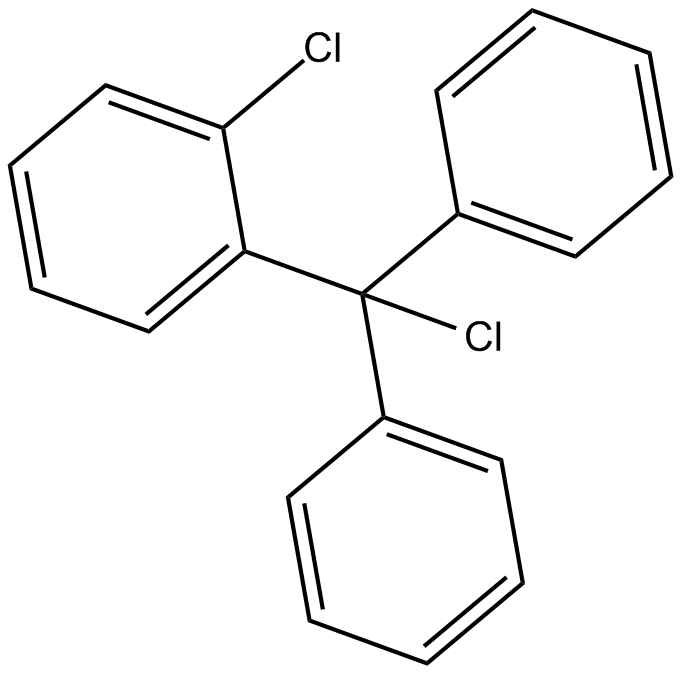
-
GC66890
2',3'-Dideoxy-5-iodocytidine
2',3'-Dideoxy-5-iodocytidin wird zur Gensequenzierung verwendet und kann als Antibiotikum verwendet werden. 2',3'-Dideoxy-5-iodocytidin ist besonders wirksam gegen Mycobacterium.
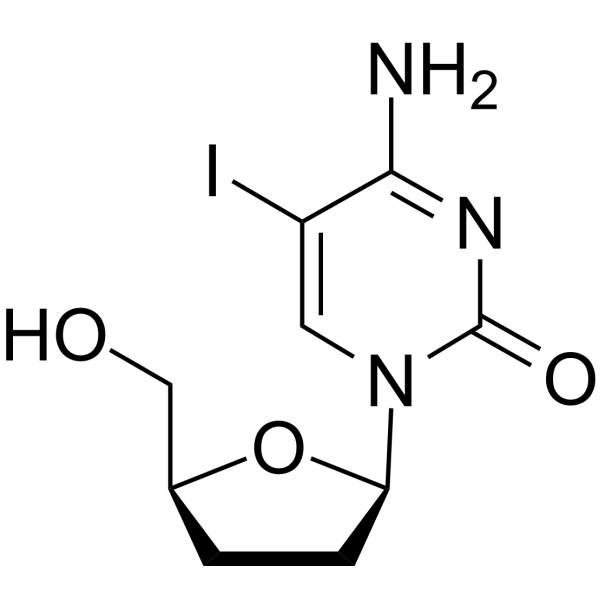
-
GC52501
2',3'-Dideoxyadenosine 5'-triphosphate (lithium salt)
An inhibitor of reverse transcriptases and DNA polymerases

-
GC67628
2',7'-Dichlorofluorescein
2',&7#39;-Dichlorfluorescein fungiert als Fluoreszenzsonde (Ex \u003d 496 nm und Em \u003d 525 nm) für die Messung reaktiver Sauerstoffspezies (ROS).
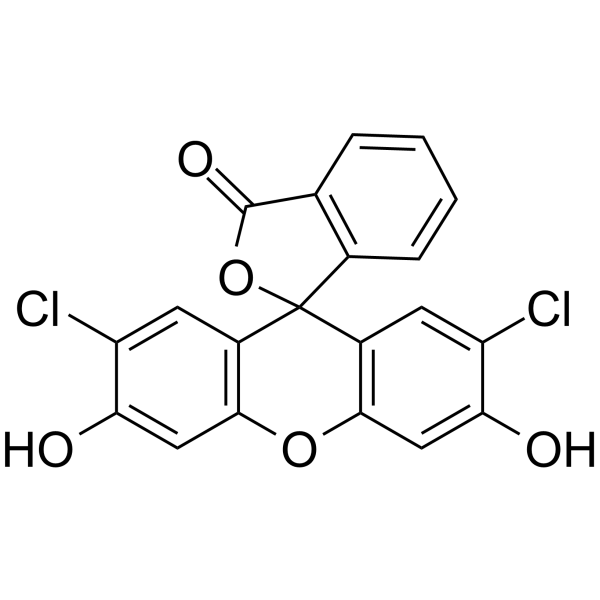
-
GC67627
2'-Deoxy-5'-O-DMT-2'-fluorouridine
2&7#39;-Deoxy-5'-O-DMT-2'-Fluoruridin, ein Nukleosid-Analogon, ist ein 5&7#39;-O-DMTr-5-FUDR-Derivat mit starker Aktivität gegen Gelbfieber (YFV).
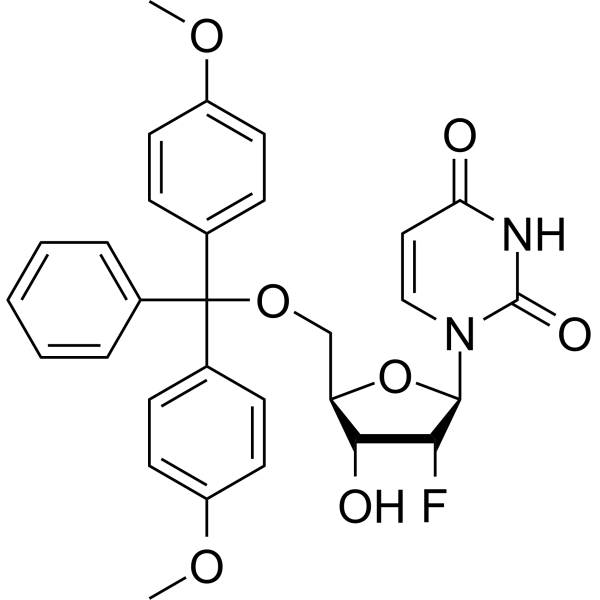
-
GC67328
2'-Deoxy-L-adenosine
2'-Desoxy-L-adenosin ist ein oral aktives Synthon für modifizierte Oligodesoxyribonukleotide. 2'-Desoxy-L-adenosin ist ein potenter, spezifischer und selektiver Inhibitor der Replikation des Hepatitis-B-Virus (HBV) sowie der eng verwandten Enten- und Waldmurmeltier-Hepatitisviren (WHV).
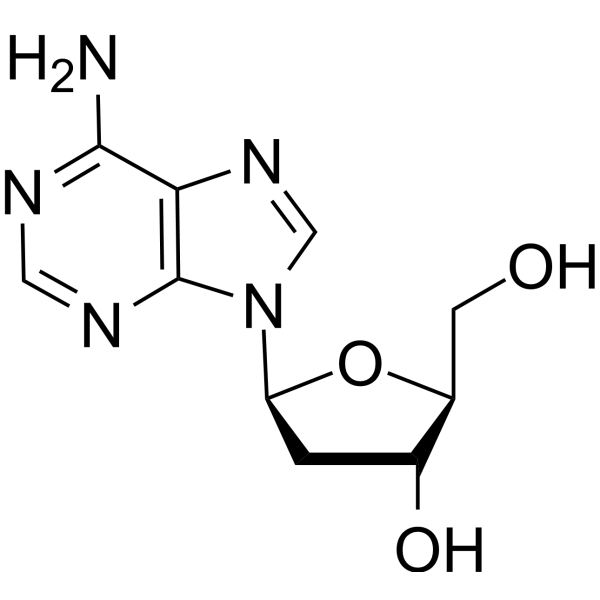
-
GC65489
2'-F-Bz-dC Phosphoramidite
&2#39;-F-Bz-dC Phosphoramidit kann bei der Synthese von Oligoribonukleotiden verwendet werden.
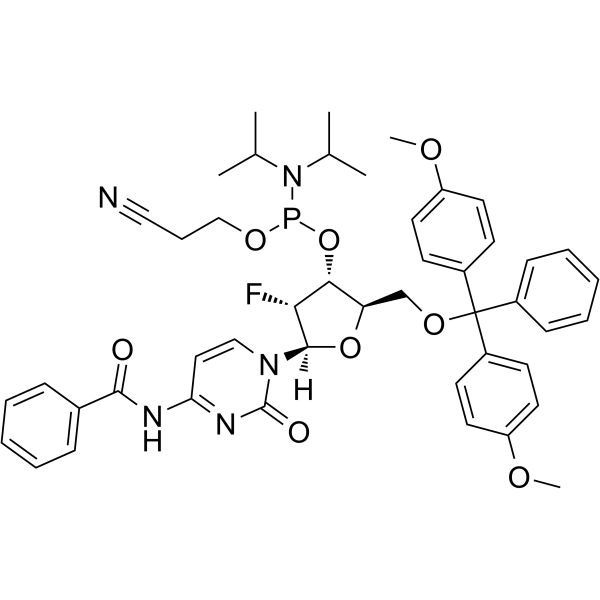
-
GC25010
2'-Hydroxy-2-methoxychalcone
2'-Hydroxy-2-methoxychalcone is a chemical.
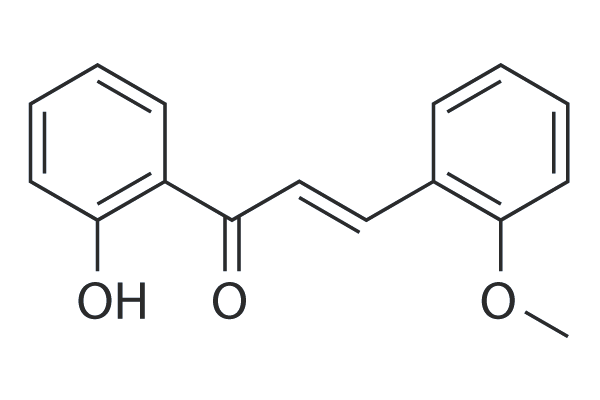
-
GC66651
2'-O,4'-C-Methyleneadenosine
2'-O,4'-C-Methylenadenosin (LNA-A) ist eine verschlossene Nukleinsäure (LNA) und ist auch ein Adenosin-Analogon.
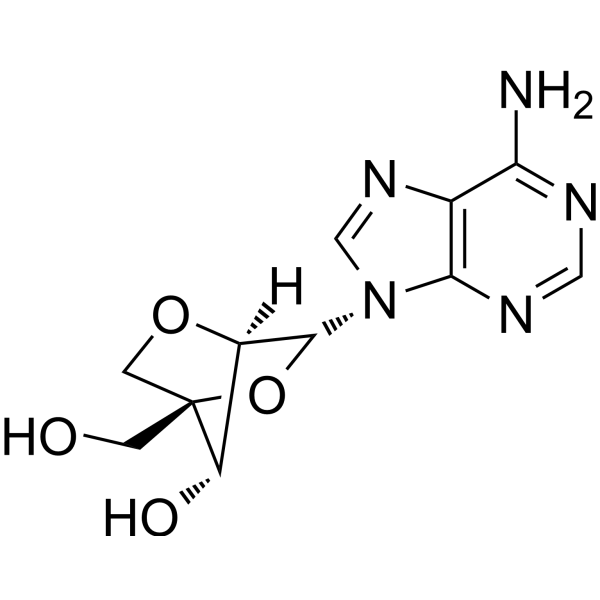
-
GC66654
2'-O,4'-C-Methylenecytidine
2'-O,4'-C-Methylencytidin (LNA-C(Bz)) ist ein bicyclisches Nukleosid-Analogon mit fester N-Typ-Konformation. 2'-O,4'-C-Methylenecytidin kann zur Synthese von Oligonukleotiden verwendet werden. 2'-O,4'-C-Methylencytidin bildet Doppelstränge mit komplementären DNA- und RNA-Strängen.
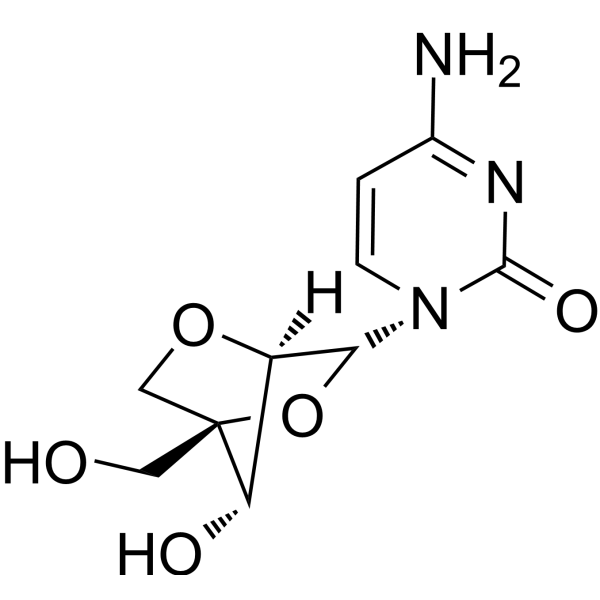
-
GC66655
2'-O,4'-C-Methyleneguanosine
2′-O,4′-C-Methylenguanosin (LNA-G) ist ein reverses Guanin-Analogon, wobei LNA (Locked Nucleinsäure) ein Nukleinsäure-Analogon ist. Die LNA-Modifikation kann in einer Vielzahl von Anwendungen verwendet werden, wie z. B. effektive Bindungsaffinität zu komplementären Sequenzen und größere Nukleaseresistenz als natürliche Nukleotide, was ein großes Potenzial für Anwendungen in der Krankheitsdiagnose und -forschung bietet. LNA-G ist auch über die KOD-DNA-Polymerase verfügbar, die die Integration von LNA-G-Nukleotiden in den DNA-Strang ermöglicht.
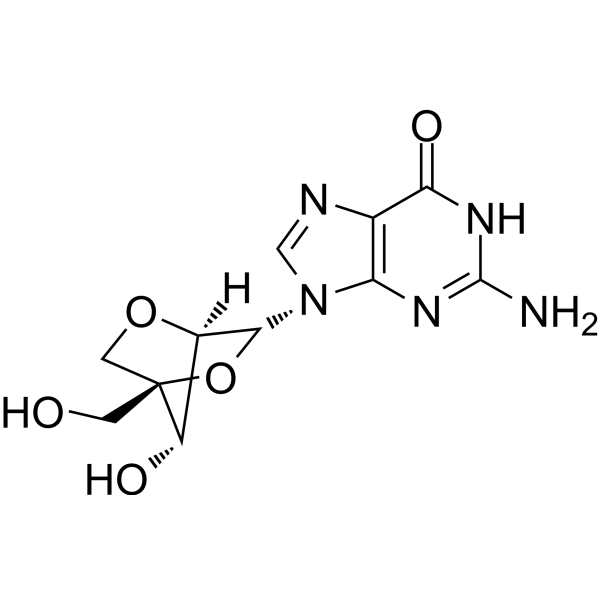
-
GC68521
2'-O-MB-cAMP sodium
2'-O-MB-cAMP (2'-O-Monobutyryl cyclic AM) Natrium ist ein aktives Vorläufermolekül von Cyclischem AMP.
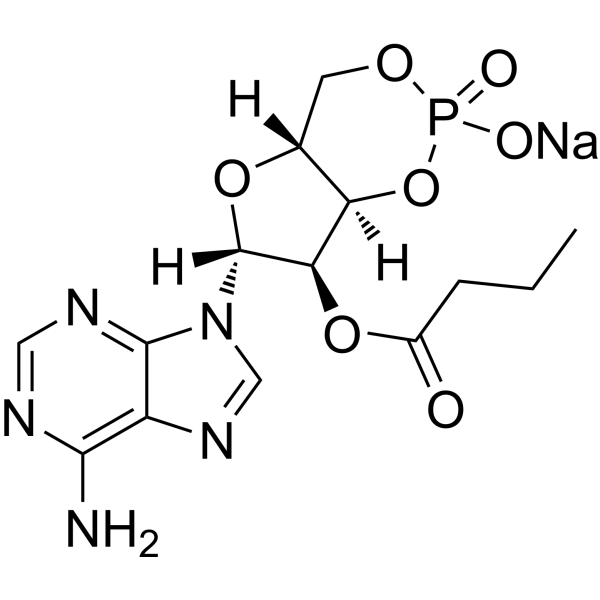
-
GC52183
2'-O-Methyl-5-methyluridine

-
GC66713
2'-O-MOE-5-Me-C(Bz)
2'-O-MOE-5-Me-C (Bz) ist ein Nukleotid für die stereoselektive Synthese von Nukleosid-Alkylphosphonaten.
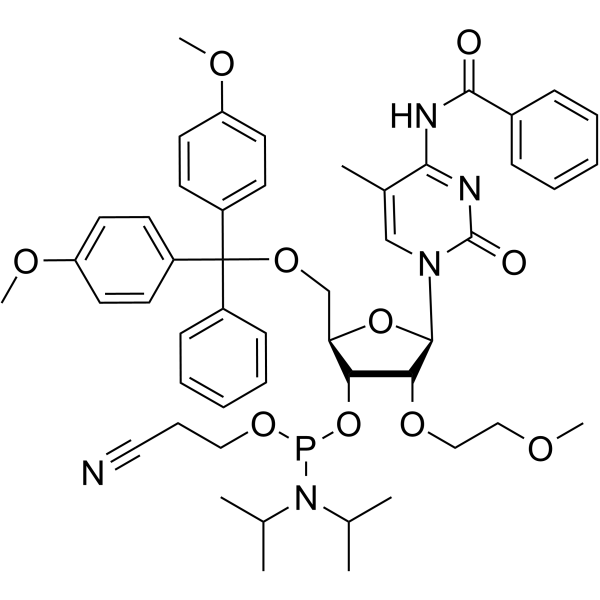
-
GC66657
2'-O-MOE-5-Me-rC
2'-O-MOE-5-Me-rC ist ein Wirkstoff. 2'-O-MOE-5-Me-rC kann für die Oligonukleotidsynthese verwendet werden.
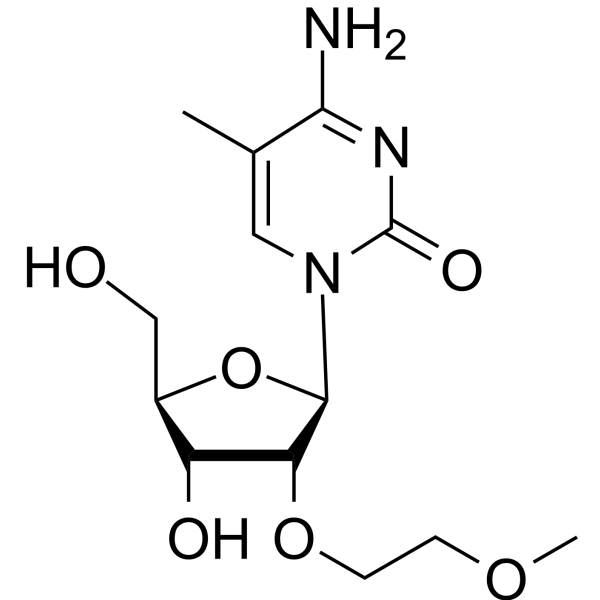
-
GC66091
2'-O-MOE-5-Me-rU
2'-O-MOE-5-Me-rU ist ein Wirkstoff. 2'-O-MOE-5-Me-rU kann zur Oligonukleotidsynthese verwendet werden.
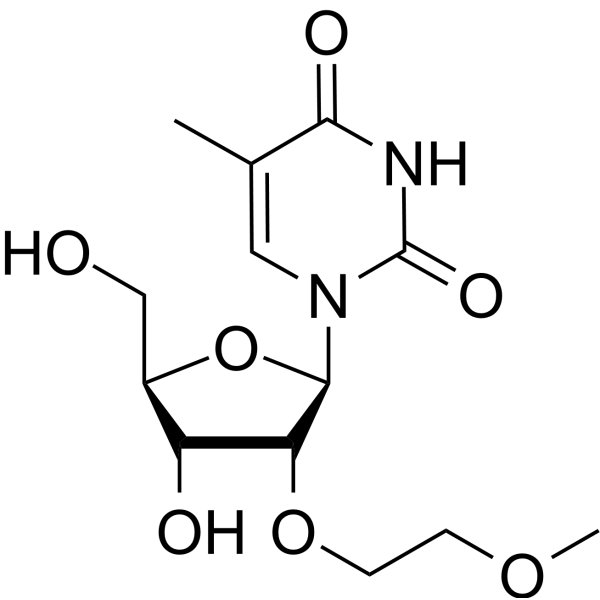
-
GC66656
2'-O-MOE-rC
2'-O-MOE-rC ist ein 2&7#39;-O-MOE-modifiziertes Nucleosid. 2'-O-MOE-rC kann zur Synthese von DNA verwendet werden.
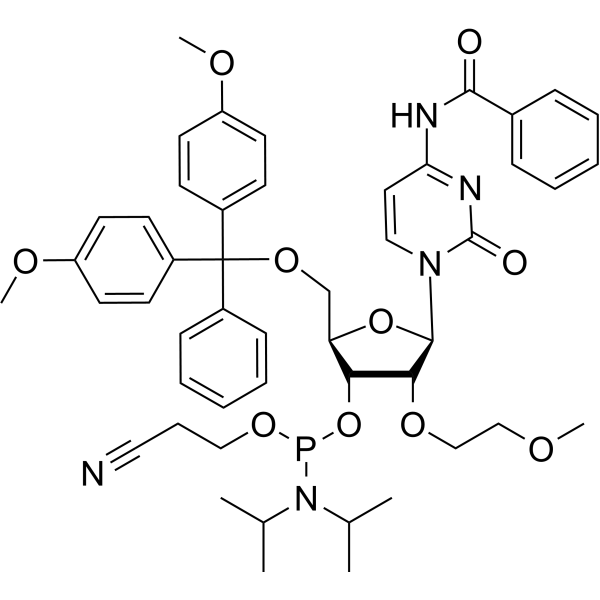
-
GC66652
2'-O-MOE-U
2'-O-MOE-U ist ein Phosphoramidit, das zur Oligonukleotidsynthese verwendet werden kann.
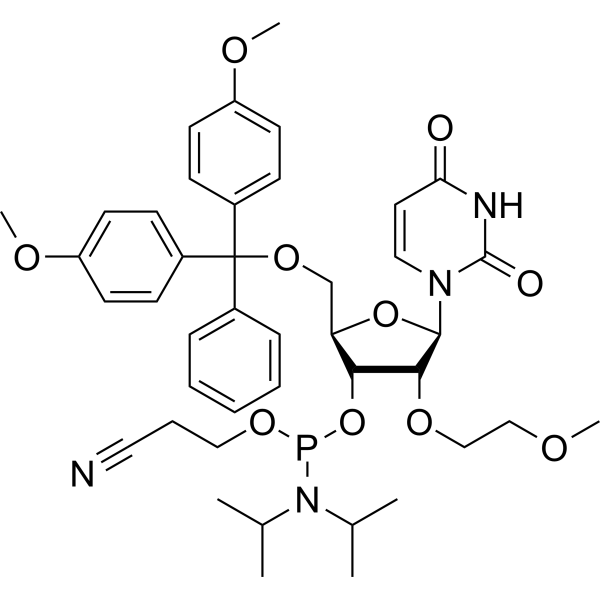
-
GC65170
2′,3′-Di-O-acetylguanosine
&2#8242;,3′-Di-O-Acetylguanosin ist ein Nukleosid-Analogon.
